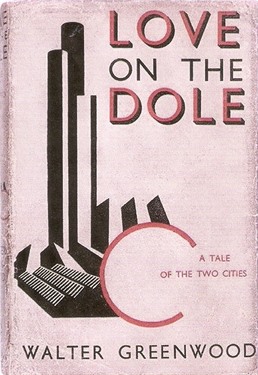
Love on the Dole is a novel by Walter Greenwood, about working-class poverty in 1930s Northern England. It has been made into both a play and a film.
Walter Greenwood was an English novelist, best known for the socially influential novel Love on the Dole (1933).
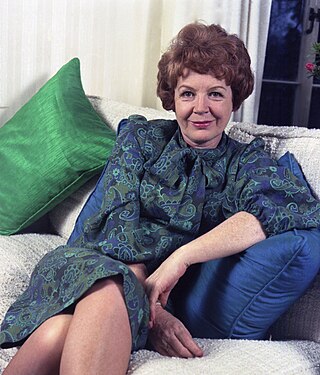
Phyllis Hannah Murray-Hill, known professionally as Phyllis Calvert, was an English film, stage and television actress. She was one of the leading stars of the Gainsborough melodramas of the 1940s such as The Man in Grey (1943) and was one of the most popular movie stars in Britain in the 1940s. She continued her acting career for another 50 years.

Marie Ault was a British character actress of stage and film.
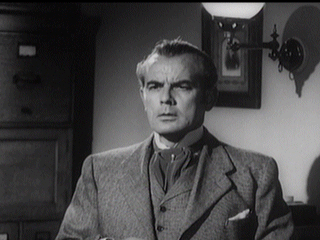
Clifford George Evans was a Welsh actor.

Carry On Nurse is a 1959 British comedy film, the second in the series of 31 Carry On films (1958–1992). Of the regular team, it featured Joan Sims, Kenneth Williams, Kenneth Connor and Charles Hawtrey, with Hattie Jacques and Leslie Phillips. The film was written by Norman Hudis based on the play Ring for Catty by Patrick Cargill and Jack Beale. It was the top-grossing film of 1959 in the United Kingdom and, with an audience of 10.4 million, had the highest cinema viewing of any of the "Carry On" films. Perhaps surprisingly, it was also highly successful in the United States, where it was reported that it played at some cinemas for three years. The film was followed by Carry On Teacher 1959.

The Proud Valley is a 1940 Ealing Studios film starring Paul Robeson. Filmed in the South Wales coalfield, the principal Welsh coal mining area, the film is about a seaman who joins a mining community. It includes their passion for singing as well as the dangers and precariousness of working in a mine.

Carry On Cowboy is a 1965 British comedy Western film, the eleventh in the series of 31 Carry On films (1958–1992). It was the first film to feature series regulars Peter Butterworth and Bernard Bresslaw. Series regulars Sid James, Kenneth Williams, Jim Dale, Charles Hawtrey and Joan Sims all feature, and Angela Douglas makes the first of her four appearances in the series. Kenneth Williams, usually highly critical of all the Carry on films he appeared in, called the film "a success on every level" in his diary, taking pride in its humour and pathos. The film was followed by Carry On Screaming! 1966.
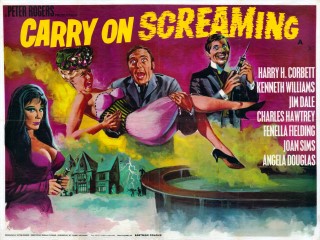
Carry On Screaming! is a 1966 British comedy horror film, the twelfth in the series of 31 Carry On films (1958–1992). It was the last of the series to be made by Anglo-Amalgamated before the series moved to The Rank Organisation. Of the regular cast, it features Kenneth Williams, Jim Dale, Charles Hawtrey, Joan Sims, Bernard Bresslaw and Peter Butterworth. It also features Harry H. Corbett in his only series appearance and Fenella Fielding making her second and final appearance. Angela Douglas makes the second of her four Carry On appearances. Carry On Screaming is a parody of the Hammer horror films, which were also popular at the time. The film was followed by Carry On Don't Lose Your Head (1967).

Carry On Doctor is a 1967 British comedy film, the 15th in the series of 31 Carry On films (1958–1992). It is the second in the series to have a medical theme. Frankie Howerd makes the first of his two appearances in the film series and stars alongside regulars Sid James, Kenneth Williams, Jim Dale, Charles Hawtrey, Joan Sims, Peter Butterworth, and Bernard Bresslaw. Hattie Jacques returns for the first time since Carry On Cabby four years earlier, while Barbara Windsor returns after her debut in Carry On Spying three years earlier. Carry On Doctor marks Anita Harris's second and final appearance in the series. The film was followed by Carry On Up the Khyber 1968.
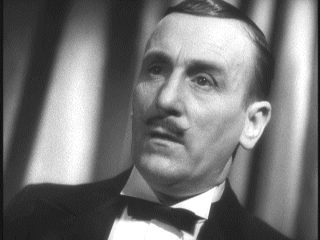
Wylie Watson was a Scottish actor. Among his best-known roles were those of "Mr Memory", an amazing man who commits "50 new facts to his memory every day" in Alfred Hitchcock's film The 39 Steps (1935), and wily storekeeper Joseph Macroon in the Ealing comedy Whisky Galore! (1949). He emigrated to Australia in 1952, and made his final film appearance there in The Sundowners (1960).

Jameson Thomas was an English film actor. He appeared in more than 80 films between 1923 and 1939.

Cottage to Let is a 1941 British spy thriller film directed by Anthony Asquith starring Leslie Banks, Alastair Sim and John Mills. Filmed during the Second World War and set in Scotland during the war, its plot concerns Nazi spies trying to kidnap an inventor.

Fanny by Gaslight is a 1944 British drama film, directed by Anthony Asquith and produced by Gainsborough Pictures, set in the 1870s and adapted from a 1940 novel by Michael Sadleir.
John Philip Baxter was a British filmmaker active from the 1930s to the late-1950s. During that time, he produced, wrote, or directed several films. He directed Deborah Kerr in her first leading role in Love on the Dole (1941), and was the producer-director for the musical-comedy films of Flanagan and Allen during World War II.
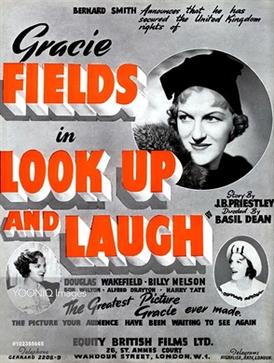
Look Up and Laugh is a 1935 British comedy film directed by Basil Dean and starring Gracie Fields, Alfred Drayton and Douglas Wakefield. The film is notable for featuring an appearance by Vivien Leigh in an early supporting role.
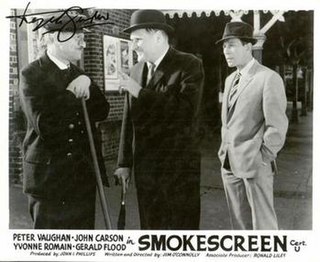
Smokescreen is a 1964 British comedy crime drama film, written and directed by Jim O'Connolly and starring Peter Vaughan.
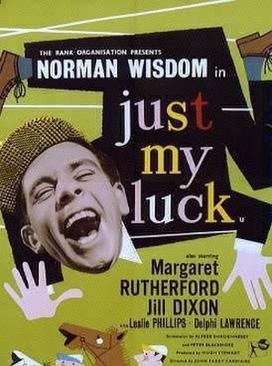
Just My Luck is a 1957 British sports comedy film directed by John Paddy Carstairs and starring Norman Wisdom, Margaret Rutherford, Jill Dixon and Leslie Phillips.

George Carney was a British comedian and film actor.

The Third Alibi is a 1961 British 'B' thriller film directed by Montgomery Tully and starring Laurence Payne, Patricia Dainton, Jane Griffiths and Edward Underdown. The screenplay is by Maurice J. Wilson and Tully, based on the play A Moment of Blindness by Pip and Jane Baker.


















